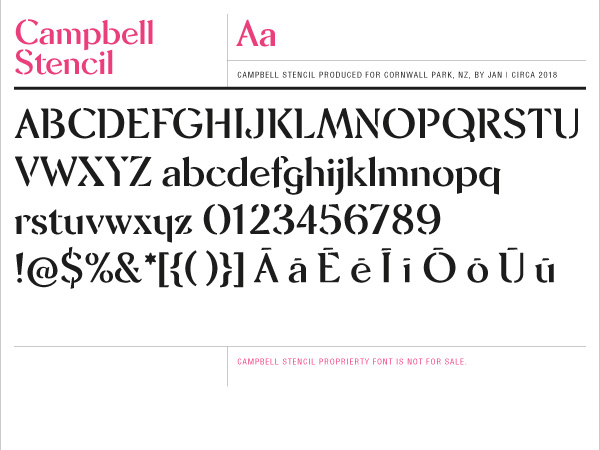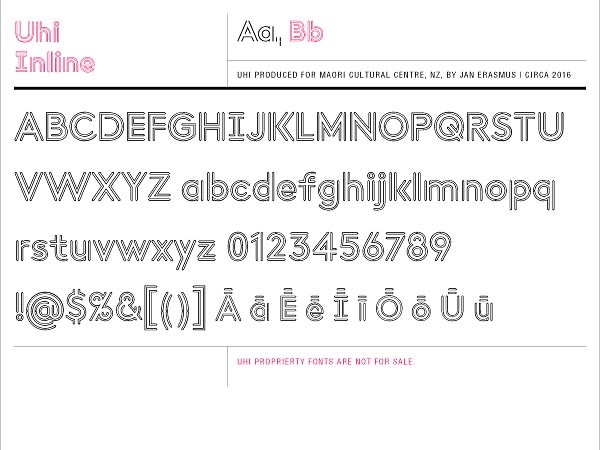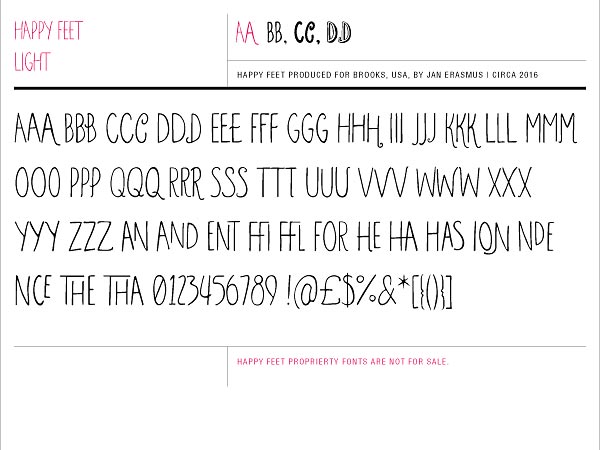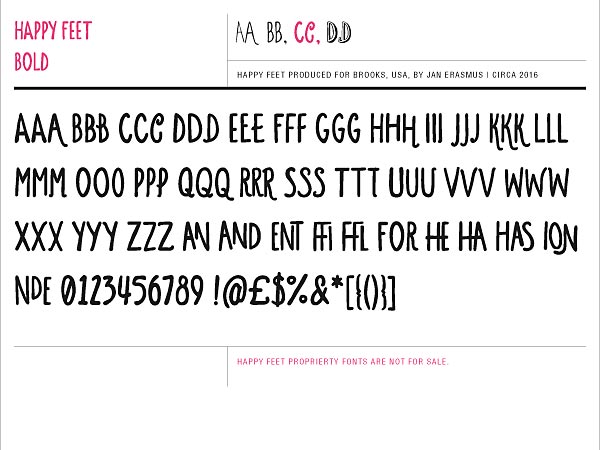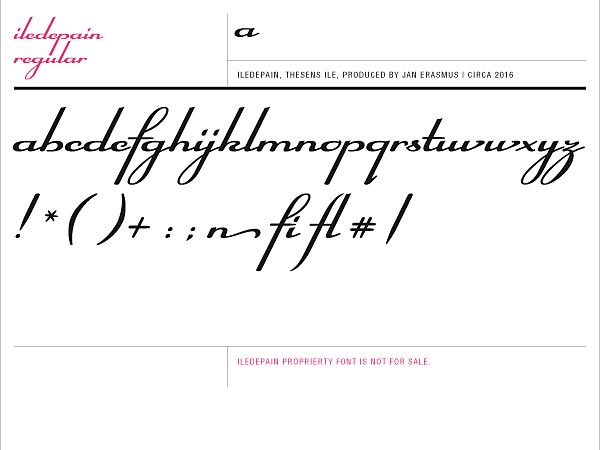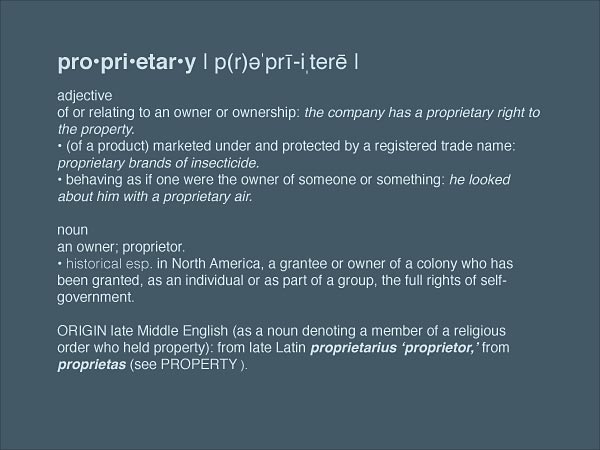Proprietary fonts
A custom typeface design is an important component of either a corporation’s branding or of a product. It sets a tone besides having a unique voice. Gone are the days where a standard Commercial font like Helvetica which everyone uses as glue to stick together the implementation with. They all look the same.
In most instances, the best solution to a corporation’s branding needs is a proprietary typeface design. Not a core font or commercial font that everyone has and can buy nowadays. Whether it is a new typeface design or a modification of an existing one, a custom font guarantees brand distinction. CyberGraphics digital font foundry has the knowledge to develop most fonts solutions for your branding needs. If you already have some wacky idea and wonder if it could be fully developed and manufactured, email email jan@cybergraphics.bz and attach some examples.
There are different ways to approach the custom font depending on time frame and budget. At the entry level we could just customize an existing font. At mid-level I engineer and kern a font based on your original artwork or a high-end level which I design from scratch. It could be for a one off event like the Soccer World Cup, an anniversary, or have a high use value and to last a long time. It might be just a few letters for a word-mark.
OpenType savvy programs
Basic character set support: Yes
Ligatures: Yes
Fractions and Scientific symbols: Yes
Small Caps: Yes
Figure Styles: Old-style, lining, tabular, etc; Yes
Stylistic sets and Alternate characters: Yes
Basic character set support: Yes
Ligatures: Yes
Fractions and Scientific symbols: Yes
Small Caps: No
Figure Styles: Old-style, lining, tabular, etc; Yes
Stylistic sets and Alternate characters: No
Basic character set support: Yes
Ligatures: Yes
Fractions and Scientific symbols: Yes
Small Caps: Yes
Figure Styles: Old-style, lining, tabular, etc; No
Stylistic sets and Alternate characters: No
Basic character set support: Yes
Ligatures: Yes
Fractions and Scientific symbols: Yes
Small Caps: Yes
Figure Styles: Old-style, lining, tabular, etc; Yes
Stylistic sets and Alternate characters: Yes
Basic character set support: Yes
Ligatures: Yes
Fractions and Scientific symbols: No
Small Caps: No
Figure Styles: Old-style, lining, tabular, etc; Yes
Stylistic sets and Alternate characters: Yes
Basic character set support: Yes
Ligatures: No
Fractions and Scientific symbols: No
Small Caps: No
Figure Styles: Old-style, lining, tabular, etc; No
Stylistic sets and Alternate characters: No
Basic character set support: Yes
Ligatures: No
Fractions and Scientific symbols: No
Small Caps: No
Figure Styles: Old-style, lining, tabular, etc; No
Stylistic sets and Alternate characters: No
Basic character set support: Yes
Ligatures: No
Fractions and Scientific symbols: No
Small Caps: No
Figure Styles: Old-style, lining, tabular, etc; No
Stylistic sets and Alternate characters: No
Basic character set support: Yes
Ligatures: Yes
Fractions and Scientific symbols: No
Small Caps: No
Figure Styles: Old-style, lining, tabular, etc; Yes
Stylistic sets and Alternate characters: Yes
Basic character set support: Yes
Ligatures: Yes
Fractions and Scientific symbols: No
Small Caps: No
Figure Styles: Old-style, lining, tabular, etc; Yes
Stylistic sets and Alternate characters: Yes
Basic character set support: Yes
Ligatures: No
Fractions and Scientific symbols: No
Small Caps: No
Figure Styles: Old-style, lining, tabular, etc; No
Stylistic sets and Alternate characters: No
About fonts
Custom fonts for consistency in Brand personality expression.
Logo fonts: logo font solutions that integrates corporate logos, trade marks & modifications into custom fonts.
Corporate fonts: typefaces used by a company designed specifically as part of it’s ID in OpenType cross-platform format. Other services include: customizing of fonts to; College Outline, Shadow, 3D Extrude, Gradient, Random and more published in any format you require.
Service quote: interested in any of these services?
Contact: jan@cybergraphics.bz
Support
This section provides you with (hopefully) everything you might need to know about ordering and using fonts from CyberGraphics. If however, you can’t find an answer to your question in these pages, please contact me by emailing your query to: jan@cybergraphics.bz
Downloads
Find below a list of useful utilities to download
Adobe Type Manager Light ›››
AdobePS printer drivers for Macintosh ›››
AdobePS printer drivers for Windows ›››
StuffIt Expander™ ›››
WinZip ›››
Move directly into the cash only lane without a trolly. Request an Invoice. Appon receipt pay your cash into Cyber Graphics account. E-mail proof of payment to jan and software isemailed to you at the speed of life. jan@cybergraphics.bz
Order online email: jan@cybergraphics.bz
Order by phone: 011 624 1711
Pay emailed Invoice via internet banking. When we receive an emailed PDF receipt for payment made by 15h00 SA standard time, fonts are emailed to you the same day in your preferred format.
Licensing: Each CyberGraphics font package is automatically licensed for use on a single output device or printer and 5 workstations at the same location. Unlike most other software which must be purchased at full price fore each device, you may upgrade your CyberGraphics fonts to multiple printer or multiple CPU use at a substantial discount; starting at 50 percent off for the 2nd printer and ranging up to 95 percent off for over 51 printers. (The upgrade price is calculated as a percentage of the original package price) Copyright © Jan Erasmus 2013. Also available from on demand 24/7.
Font formats
CyberGraphics fonts are available in PostScript 1, TrueType & PS1/OpenType & TTF/Open Type for Mac, Windows & Linux.
CyberGraphics manufactures OpenType fonts to the following specification:
Platforms: Macintosh and Windows
Font Format: OpenType CFF (PostScript outlines) & (TTF)
Encoding: Unicode
Character Set: Basic Latin and Latin-1 Supplement character set
System Requirements: Mac OS X, Mac OS 8.62 or higher. Microsoft Windows Vista, XP, 2000, NT42, ME2, 982, or 952
1 Requires Adobe Type Manager Light (bundled with most operating systems, otherwise a free download from Adobe)
OpenType History
OpenType is a scalable format for computer fonts initially developed by Microsoft, with Adobe Systems later joining in. OpenType as a technology was announced publicly in 1996 and had a significant number of OpenType fonts shipping by 2000–2001. Adobe completed conversion of its entire font library to OpenType around the end of 2002. As of early 2005[update], there were around 10,000 fonts available in OpenType format, with Adobe's library making up under a third of the total. By 2006, every major font foundry and many minor ones were developing fonts in OpenType format OpenType, jointly developed by Adobe and Microsoft in 1997, is the successor to both the PostScript.
OpenType Cross-platform compatibility
OpenType is a cross-platform format. An OpenType font file can be installed on both Macintosh and Windows platforms, and its installation requires installing just one file per family if made that way. In comparison, the Type 1 PostScript format requires installation of multiple files per family which are incompatible between Macintosh and Windows.
—Because they offer 100% cross-platform compatibility, OpenType fonts are the best choice for those working in a multi-platform environment. CyberGraphics PostScript fonts are also cross-platform compatible to the greatest extent possible, but users should keep in mind that operating systems impose unique constraints upon typography, with the result that all fonts — regardless of their origin — have certain limitations.
—Character set differences. All fonts contain more characters than can be reached through the keyboard, and operating systems differ as to which characters they allow users to access. The fi and fl ligatures, for example, are available on the Macintosh but inaccessible under Windows; inversely, the fractions 1/4, 1/2, and 3/4 are available under Windows but not always accessible on the Mac. Documents containing these characters may therefore behave unexpectedly when exchanged between platforms.
—Font family arrangements. Microsoft Windows requires that PostScript font families contain only the four styles regular, italic, bold, and bold italic. In order to offer Windows users access to all the styles that are available on the Mac, type foundries have traditionally engineered their Windows fonts so that each font style appears as its own family. This technique gives users on both platforms access to the same range of font styles, but it causes each operating system to address the same font by a slightly different name. Not all applications are able to recognize these semantic distinctions, and those that cannot may substitute “missing” fonts with a system default such as Arial.
Macintosh System Requirements:
OpenType CFF (PostScript outlines):Mac OS X, Mac OS 8.6 or higher.
Adobe PostScript Type 1: Mac OS X, Mac OS 8.6 or higher.
Windows System Requirements:
OpenType CFF (PostScript outlines): Microsoft Windows 7, Vista, XP, 2000, NT4, ME, 98, or 95
Adobe PostScript Type 1: Microsoft Windows 7, Vista, XP, 2000, NT4, ME, 98, or 95
Apps. compatibily chart
Most applications work with OpenType fonts, but support for advanced features may vary greatly. This table gives insight to which degree support of OpenType font advanced features is offered by different applications. See chart in last frame of image scroller above
A B C D E F G H I J K L M N O P Q R S T U V W X Y Z
a b c d e f g h i j k l m n o p q r s t u v w x y z
0 1 2 3 4 5 6 7 8 9 ¹ ² ³ ½ ¼ ¾ × Ä Å Â À Á Ã Ç É Ê Ë È Í Î Ï Ì Ñ Ö Õ Ó Ô Ò Ø Ú Û Ù Ü Ÿ Ýá à â ä ã å ç é ê ê ë ı í ì î ï ñ ó ò ô ö õ ø ú ù û ü ÿ µ Æ Œ æ œ fi fl ß Ð ð Ł ł Š š Ý ý Þ þ Ž ž & ~ $ ¢ £ ¥ ƒ ¤ ° * # ® © ™ ª º ¶ † ‡ § @ % ‰ ! ¡ ? ¿ … . , · : ; • ‚ „ “ ” ‘ ’ ” ‘ [ ] { } ( ) / | \ « » ‹ › < > + = ÷ ± ¦ – ¬ ≠ ´ ¨ ˆ ˜ ¯ ˘ ˙ ˚ ¸ ˝ ˛ ˇ ^ _ `

